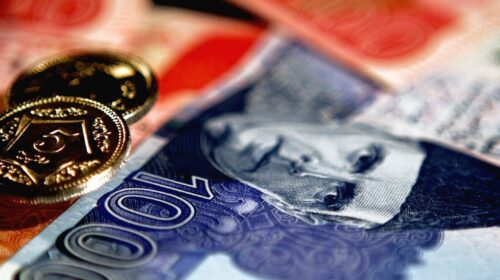The current account deficit (CAD) sharply widened to $15.2 billion in the first 11 months of the outgoing fiscal year compared to just $1.183bn in the corresponding period last year.
The State Bank of Pakistan’s (SBP) latest data showed that the CAD was more than doubled when compared with $618 million in April. The May deficit was even higher than March’s $1.015bn.
The economy has been trapped by a soaring CAD and falling foreign exchange reserves amid the sharp devaluation of the rupee shattering the external account of the economy while leaving no chance for the PML-N-led coalition government to raise dollars from the international market.
The data showed that the main reason for the widening current account deficit was the surging import bill.
The import bill reached $75.746bn during the first 11 months of the current fiscal year against $55.561bn in the same period last year. The government could not control the world oil prices which were rising on strong demand from all countries to meet their growing energy needs as economic activities picked up the pace the post-pandemic.
But the huge trade gap was not solely due to higher oil prices as the import bill in 11 months of the current fiscal year was $75.74bn while the payments for petroleum products during the same period were about $17.923bn compared to the last year’s $9.818bn.
The PML-N-led coalition government banned imports of luxury and non-essential goods 32 items to bring down the import bill but it looks the decision could not produce the desired result as the trade gap has constantly been increasing.
The trade deficit, as per the SBP data, stood at $40.095bn during July-May FY22. The imports of goods and services were $75.7bn against the exports of goods and services worth $35.651bn.
This huge deficit resulted in the steep fall of foreign exchange reserves of the country which finally depreciated the local currency by 24pc against the US dollar during the outgoing fiscal year.
The government succeeded to avail $2.3bn from China to support its falling foreign exchange reserves but the reports in media suggested that the Chinese inflow was costlier than earlier since the interest rate has been increased.
The financial sector closely watching Pakistan’s relationship with China since Islamabad was barred to attend the international conference of BRICS (Brazil, Russia, India, China and South Africa) hosted by China. Though, the foreign ministries of both the countries announced goods relations but the financial sector is keen to know about this important regional development.
Besides the leaders of BRICS states, China had invited leaders of 13 countries to the event, which was widely seen as part of a push by Beijing to expand the five-member grouping. The countries invited to what is being described as the “BRICS-Plus” meeting were Algeria, Argentina, Cambodia, Egypt, Ethiopia, Fiji, Indonesia, Iran, Kazakhstan, Malaysia, Senegal, Thailand and Uzbekistan.
China is the largest trade partner of Pakistan while the balance is largely in Beijing’s favour. Imports from China during July-May FY22 were $15.69bn compared to $11.455bn last year. The growth in exports was extremely poor as it was just $2.5bn compared to last year’s $1.8bn.







